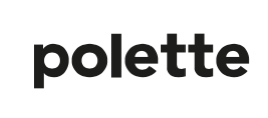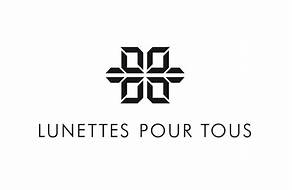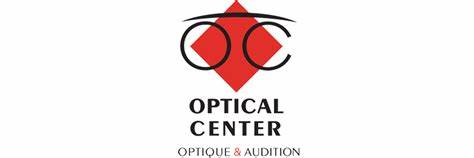Summary
The global optics market, encompassing eyewear, sunglasses, and contact lenses, was estimated at US$ 183.36 billion in 2023 with a projected growth to US$ 323.77 billion by 2030, advancing at a CAGR of 8.1% from 2020-2027. This growth is driven by an aging population, increasing incidence of visual impairments, and rising disposable incomes enabling the purchase of premium eyewear. The market rebounded with a 4.5% growth in France in 2023 over the prior year despite challenges from healthcare regulations and economic uncertainties. French demand for optical correction remained high with 75% of the population aged 16 to 75 requiring some form of eyewear in 2023. Spending on medical optics in France saw significant movement, with a year-over-year increase of 0.2% to €7.3 billion in 2022.
In terms of eyewear preference, 75% of French people opt for prescription glasses, heavily influenced by age demographics. The sunglasses sector is also booming, generating US$ 15 billion globally in 2023. Despite a contraction in manufacturing establishments and workforce in France from 2007 to 2022, the retail optician segment has seen growth in the number of establishments and employees, highlighting the industry's resilience and adaptation to market dynamics.
Market Evolution and Emerging Trends in Optical Demand
The optical market in the concerned country has been marked by a steady growth trajectory, with recent years showing a particularly positive trend. With an increase in the aging population and a rise in disposable incomes, the demand for eyewear—including prescription glasses, sunglasses, and contact lenses—has been on the uptick. In fact, the year 2023 was especially remarkable, despite the challenges posed by rising costs and potential regulatory threats. A deeper look into the demand analysis reveals that a significant proportion of the population still grapples with unaddressed or inadequately corrected vision problems. This issue becomes more pronounced with advancing age, as nearly a quarter to over a third of the population above the age of 25 experiences vision disorders. With projections indicating that about half of the global population could be myopic by 2050, a substantial increase in demand for corrective vision solutions is inevitable. In terms of product preferences, the French market shows a strong inclination towards prescription glasses, with roughly three-quarters of the population opting for them over contact lenses. It's noteworthy that the design and aesthetics of eyewear play a crucial role in consumer choice alongside price and comfort, transforming a basic necessity into a fashion statement.
For sunglasses, a market estimated to reach between 15 and 20 billion by 2026, style takes precedence for the younger demographic, whereas the general population prioritizes protective quality. The market is not only driven by fashion trends but also by economic considerations. The "reste à charge" (out-of-pocket expense) for optical items remains significantly high, meaning consumers are quite sensitive to price. This financial aspect influences the strategies adopted by market players, with some opting to emphasize their "Made in France" production to tap into the premium segment, while others leverage insourcing for cost benefits. In conclusion, the French optics market displays robust signs of growth, fueled by demographic shifts, health considerations, and fashion trends. The discerning French consumer considerations, ranging from price sensitivity to aesthetic appeal, dictate the market dynamics, as well as the strategic positioning of key players. As demands continue to evolve, the optical market is expected to adapt, offering a blend of high-quality medical devices and stylish accessories.
Landscape of Market Leaders in the Global Optics Market
In the intricate tapestry of the global optics market, several key players have established their dominance through innovation, strategic positioning, and adherence to consumer preferences. The companies mentioned above showcase a diverse market presence, from production prowess to retail specialization, each contributing uniquely to the industry's ecosystem. Here’s a closer look at these major contributors:
- Luxottica: A Giant Amongst Titans Luxottica stands as a colossus in the eyewear industry, not merely due to its expansive distribution network but also because of its strong brand portfolio that includes household names like Ray-Ban, Persol, and Oakley. This Italian-based behemoth has managed to capture a significant share of the market globally, reinforcing its position as a leader in both the design and retail sectors of eyewear.
- Vision Source: Pioneering Optometric Excellence Another notable entity in the field is Vision Source, primarily situated within the United States. By fostering a network of independent optometrists and leveraging their expertise, Vision Source ensures that it strikes a crucial balance between professional eye care and commercial optical retailing, thereby addressing a comprehensive range of consumer needs.
- Polette: The Modern Visionary in Eyewear Retail Emerging on the scene with a disruptive model is Polette, which has carved a niche for itself by offering an in-house production system that prides itself on affordability without conceding on style or quality. With a direct-to-consumer approach and strategic manufacturing in China, Polette has quickly become a name synonymous with contemporary eyewear trends.
- Krys, Optic 2000, and Atol: The Trio of French Finesse On the front of ensuring "Made in France" remains more than just a slogan, these three companies reflect the premium segment of the eyewear market. Krys, Optic 2000, and Atol are well-known for championing high-quality production along with an emphasis on local manufacturing. Each brand appeals to those who wish to combine style with French craftsmanship in their eyewear choices.
- Alain Afflelou: From Value to Virtue Alain Afflelou started as a brand that celebrated cost-effectiveness and has since transitioned towards highlighting “Made in France” products, reflecting the brand’s adaptability and its response to the growing consumer demand for traceability and locally produced goods. The brand, known for its clever marketing and expansive franchise network, continues to be a formidable player in the optics arena.
to understand this market
Detailed content
 Inforamtion
Inforamtion
- Number of pages : 30 pages
- Format : Digital and PDF versions
- Last update : 16/04/2024
 Summary and extracts
Summary and extracts
1 Market overview
1.1 Definition and presentation
The optics market includes items and accessories worn on the eyes. Optical equipment can be worn for a variety of reasons, but among the most common are use as an accessory, to correct visual disorders or to protect the eyes. The three largest categories in the eyewear industry are:
- Eyewear ;
- Sunglasses;
- Contact lenses.
The optical industry thus encompasses all the players and processes involved in the design, production and sale of the aforementioned items. On a global level, the market's growth prospects are very promising, with a growth rate of 8.5% between 2023 and 2030. The aging of the population and the evolution of life expectancy around the world mean that the number of people needing eyeglasses or contact lenses is set to rise. This upward trend is also reinforced by rising disposable incomes, which should continue to drive the premiumization of the eyewear industry in all segments, especially non-corrective lenses.
The market has been affected by the health crisis, with store closures and confinements. However, the optical market is a consolidated one, and despite sales declines in 2020 for many brands, there is little doubt that this vital market will recover.
While many high-end French manufacturers are performing well on the export market, many local retailers are in fierce competition with each other.
2023 was a record year for the optical sector in France (4.5% growth over 2022), and 2024 is full of challenges: rising costs, falling consumer purchasing power, the threat of the PLFSS, low wages for employees in the sector...
1.2 A fast-growing global market
Global market size
Optical market size World, ****-****, in billions of US$ CAGR (***): +*.* CAGR (***): +*.*% Source: ****
The global optical market, which includes eyewear, contact lenses, sunglasses and other eyewear products, was estimated to be worth around US$ ***.** billion in **** and is expected to reach a value of US$ ***.** billion by ****.
There are ...
1.3 A growing national market
The optics market comprises articles, accessories and services relating to eyes and vision, and is generated mainly by the sale of pairs of prescription and sunglasses (***), contact lenses, opticians and optical stores.
Optical market value France, ****-****, in millions of euros Source: ****
By ****, optical sales have been estimated at *.* billion euros, ...
1.4 Optical foreign trade
Here we consider the data provided by UN Comtrade for the following product categories:
**** **** **** And their sub-categories
These three codes include eyeglasses, contact lenses, sunglasses and frames.
Foreign trade in optics France, ****-****, in millions of US$ Source: ****
The chart above illustrates France's trade in eyewear. It shows that France ...
2 Demand analysis
2.1 Incompressible demand and rising healthcare costs
A large proportion of demand still unaddressed
Figures provided by Santé.gouv show that a significant proportion of the population suffers from uncorrected or poorly corrected vision disorders. This proportion increases with the age of the population: for example, it is estimated that almost **% of women between the ages of ** and ...
2.2 A French preference for glasses
A strong preference for glasses, and age has a major influence
The French and optical equipment France, ****, in percent Source: ****
In ****, **% of French people wear only prescription glasses, and this varies by age:
**% of those aged ** and over **% of **-** year-olds
[***]
What drives the use of prescription eyewear?
Occasions ...
2.3 Sunglasses
In ****, the global sunglasses market will reach ** billion, with ** pairs of sunglasses sold every second. This market is estimated to reach ** billion in ****. [***]
What type of sunglasses?
Do you wear corrected sunglasses for your eyesight? France, ****, in % Source: ****
In ****, nearly one in seven French people (***) wore corrected sunglasses for their eyesight, ...
2.4 Lenses, increasingly popular
French contact lens market to reach around *** million euros in **** [***]. The French contact lens market grew by +**% between **** and ****, representing very intense growth over the period. What's more, it has grown faster than the French optical market, accounting for an ever-increasing share of that market : it represented *% of the market in ...
2.5 Where to buy, online sales: a new distribution channel with advantages and disadvantages
Here are the results of a **** survey about where to buy eyewear:
Eyewear purchase location France, ****, in % Source: ****
Traditional opticians were far behind, with **% of respondents buying their glasses at home, far ahead of low-cost chains (***). In ****, **% of lens wearers said they regularly bought online, and **% of those who didn't declared ...
3 Market structure
3.1 The care pathway and the various healthcare professionals involved
Here's a diagram showing the market structure:
Only an ophthalmologist (***). During the appointment, the specialist examines the eyes through various tests, then draws up the prescription according to the person's specific needs. The first prescription is valid for one year, and once renewed, lenses can be purchased for a further * years. ...
3.2 Optical equipment production in France
The eyewear and contact lens production process
The production sites of the optical market are diverse, from the big leaders established in France to the historic houses and the new brands and start-ups that are emerging. Depending on the range, spectacles and lenses are not all manufactured in the same ...
3.3 Distribution in the optical market
Overview of the optical retailing
Here, we consider the data provided by NAF code **.**A "Optical retailing", which includes the activities of opticians.
Number of establishments under code **.**A France, ****-****, in units Source : URSSAF Workforce under code **.**A France, ****-****, in units Source: ****
In contrast to thelens and eyewear manufacturing ...
3.4 Market players
Lens manufacturers
EssilorLuxottica (***), world leader with its subsidiaries BBGR and Shamir, Hoya (***) Carl Zeiss (***) Rodenstock (***) Seiko (***) Ophtalmic (***) Novacel (***)
This handful of players would account for over **% of the market for spectacle lenses sold in France in ****.
Opticians
Source: ****
A OpinionWay survey in February **** for MPF Conseil revealed the following ranking of ...
4 Offer analysis
4.1 Market products
General overview
Broadly speaking, the three main sectors of the eyewear industry include :
Eyewear (***) Sunglasses Contact lenses
The product range is broad, and is measured according to the different needs of the eye. Glasses with different types of lenses, contact lenses, sunglasses with polarized lenses or different colors for a specific ...
4.2 Eyeglass and contact lens prices
In the optical sector, price variations are significant and depend on various parameters such as lens type, quality, production location and production chain. The distribution channel also plays a role; glasses can be sold in pharmacies, opticians, supermarkets, etc.
Looking at the data provided by INSEE for the "medical optics" category, ...
4.3 New concepts and new products
New concepts
Relying on digital and "cross channel" devices , brands are developing new store concepts.
Atol, for example, introduced a point-of-sale concept in June **** that relies on digital applications from its Atol Pro to attract new franchisees and strengthen its network.
Atol stores are equipped with an "Atol Pro" digital solution ...
5 Regulations
5.1 The importance of the regulatory environment
Prior to ****, Internet sales of healthcare products (***) were prohibited in France. The European Commission then obliged France to open up the market to online opticians, but the market remained without a legislative framework for several years following this decision. The online sale of optical products was then gradually regulated by a ...
5.2 Reimbursement amounts and coverage
The regulatory environment is of paramount importance in France, and new regulations can alter the structure of demand. The new **** regulations capping the reimbursement of glasses and limiting the renewal of glasses to once every two years are thus said to be responsible for the slower growth in the market since ...
5.3 A new stage in zero out-of-pocket expenses in 2020
From January *, ****, entry-level "no out-of-pocket expenses" offers (***) or CMU-c.
The ***% health care reform offers services and equipment in a specific basket comprising * care categories: optical, dental and audiology. The equipment and services contained in these baskets will be fully covered. The optical and dental baskets in the ***% offer will be available ...
6 Positioning the players
6.1 Optical market segmentation
- Polette
- Optique E.Leclerc
- Lunettes pour tous
- Otiko
- Mister Spex
- GrandVision
- Optic 2000
- MB production
- Optical Center
- Coffignon
- Marcolin (LVMH Groupe)
- Essilor Luxottica groupe
- Afflelou
- Krys Group
- Kering Eyewear
- Générale d'optique (GrandVision)
- Direct Optic (Acuitis Groupe)
- Easy Verres
- Easy Lunettes
- MyMonture
- L'Opticien qui bouge
- Optique Lafayette (Laf Santé Groupe)
- Optical Discount
- Lissac (Optic 2000)
- Thélios (LVMH Groupe)
- Fittingbox
 List of charts
List of charts
- Optical market size
- Proportion of the population wearing glasses and contact lenses
- Optical market value
- Medical optics consumption
- Structure of optical spending
All our studies are available online in PDF format
Take a look at an example of our research on another market!
Latest news
Companies quoted in this study
This study contains a complete overview of the companies in the market, with the latest figures and news for each company. :
 Choosing this study means :
Choosing this study means :
Access to more than 35 hours of work
Our studies are the result of over 35 hours of research and analysis. Using our studies allows you to devote more time and added value to your projects.
Benefit from 6 years' experience and over 1,500 industry reports already produced
Our expertise enables us to produce comprehensive studies in all sectors, including niche and emerging markets.
Our know-how and methodology enable us to produce reports that offer unique value for money.
Access to several thousand articles and paid-for data
Businesscoot has access to all the paid economic press as well as exclusive databases to carry out its market research (over 30,000 articles and private sources).
To enhance our research, our analysts also use web indicators (semrush, trends, etc.) to identify market trends and company strategies. (Consult our paying sources)
Guaranteed support after your purchase
A team dedicated to after-sales service, to guarantee you a high level of satisfaction. +44 238 097 0676
A digital format designed for our users
Not only do you have access to a PDF, but also to a digital version designed for our customers. This version gives you access to sources, data in Excel format and graphics. The content of the study can therefore be easily retrieved and adapted for your specific needs.
 Our offers :
Our offers :
the optical market | France
- What are the figures on the size and growth of the market?
- What is driving the growth of the market and its evolution?
- What is the positioning of companies in the value chain?
- Data from several dozen databases
Pack 5 études (-15%) France
- 5 études au prix de 75,6€HT par étude à choisir parmi nos 800 titres sur le catalogue France pendant 12 mois
- Conservez -15% sur les études supplémentaires achetées
- Choisissez le remboursement des crédits non consommés au terme des 12 mois (durée du pack)
Consultez les conditions du pack et de remboursement des crédits non consommés.






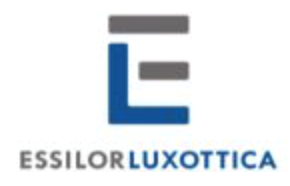 BBGR boosts Seine-et-Marne capacity by 30% to keep pace with growth in Nikon optical lenses - 30/03/2024
BBGR boosts Seine-et-Marne capacity by 30% to keep pace with growth in Nikon optical lenses - 30/03/2024
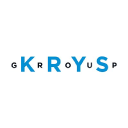 Krys Group puts the finishing touches to the modernization of its Bazainville plant - 08/03/2024
Krys Group puts the finishing touches to the modernization of its Bazainville plant - 08/03/2024
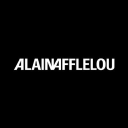 Afflelou innovates: discount, private labels and teleconsultation - 04/12/2023
Afflelou innovates: discount, private labels and teleconsultation - 04/12/2023
